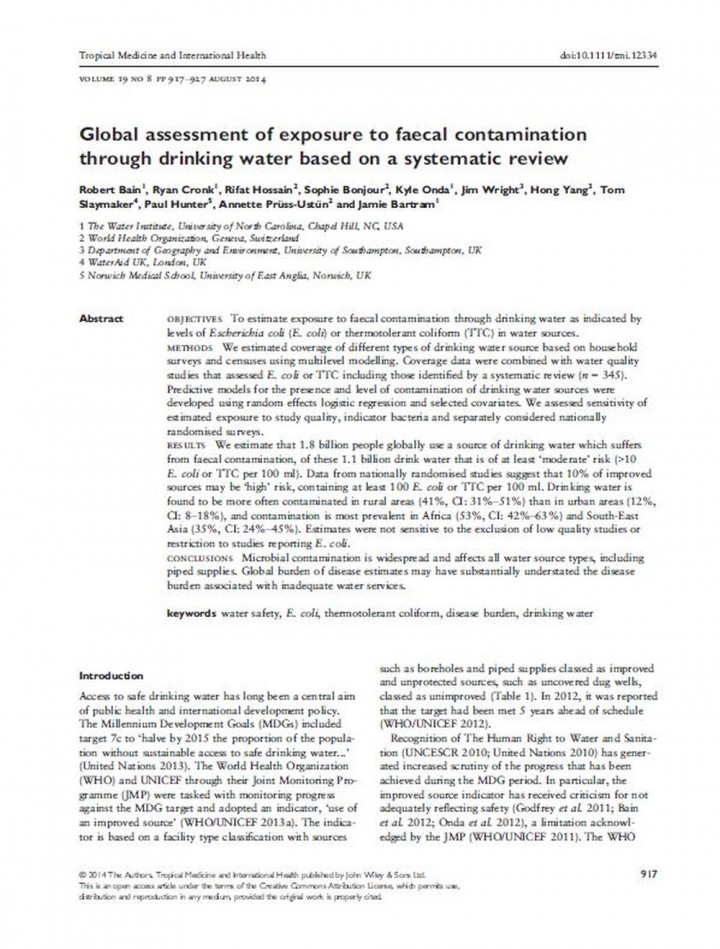Global assessment of exposure to faecal contamination through drinking water based on a systematic review
Bain, R. et al. (2014)

Published in: 2014
Pages: 11
Publisher:
Tropical Medicine and International Health, Volume 19 (8), Pages 917-927, doi:10.1111/tmi.12334
Author:
Bain, R. et al.
Uploaded by:
SuSanA Admin
Partner profile:
common upload
5886 Views
79 Downloads
Objectives:
To estimate exposure to faecal contamination through drinking water as indicated by levels of Escherichia coli (E. coli) or thermotolerant coliform (TTC) in water sources.
Methods:
We estimated coverage of different types of drinking water source based on household surveys and censuses using multilevel modelling. Coverage data were combined with water Quality studies that assessed E. coli or TTC including those identified by a systematic review (n = 345). Predictive models for the presence and level of contamination of drinking water sources were developed using random effects logistic regression and selected covariates. We assessed sensitivity of estimated exposure to study quality, indicator bacteria and separately considered nationally randomised surveys.
Results:
We estimate that 1.8 billion people globally use a source of drinking water which suffers from faecal contamination, of these 1.1 billion drink water that is of at least ‘moderate’ risk (>10 E. coli or TTC per 100 ml). Data from nationally randomised studies suggest that 10% of improved sources may be ‘high’ risk, containing at least 100 E. coli or TTC per 100 ml. Drinking water is found to be more often contaminated in rural areas (41%, CI: 31%–51%) than in urban areas (12%, CI: 8–18%), and contamination is most prevalent in Africa (53%, CI: 42%–63%) and South-East Asia (35%, CI: 24%–45%). Estimates were not sensitive to the exclusion of low quality studies or restriction to studies reporting E. coli.
Conclusions:
Microbial contamination is widespread and affects all water source types, including piped supplies. Global burden of disease estimates may have substantially understated the disease burden associated with inadequate water services.
Bibliographic information
Bain, R. et al. (2014). Global assessment of exposure to faecal contamination through drinking water based on a systematic review. Tropical Medicine and International Health, Volume 19 (8), Pages 917-927, doi:10.1111/tmi.12334
Filter tags
English Groundwater protection (WG11)














